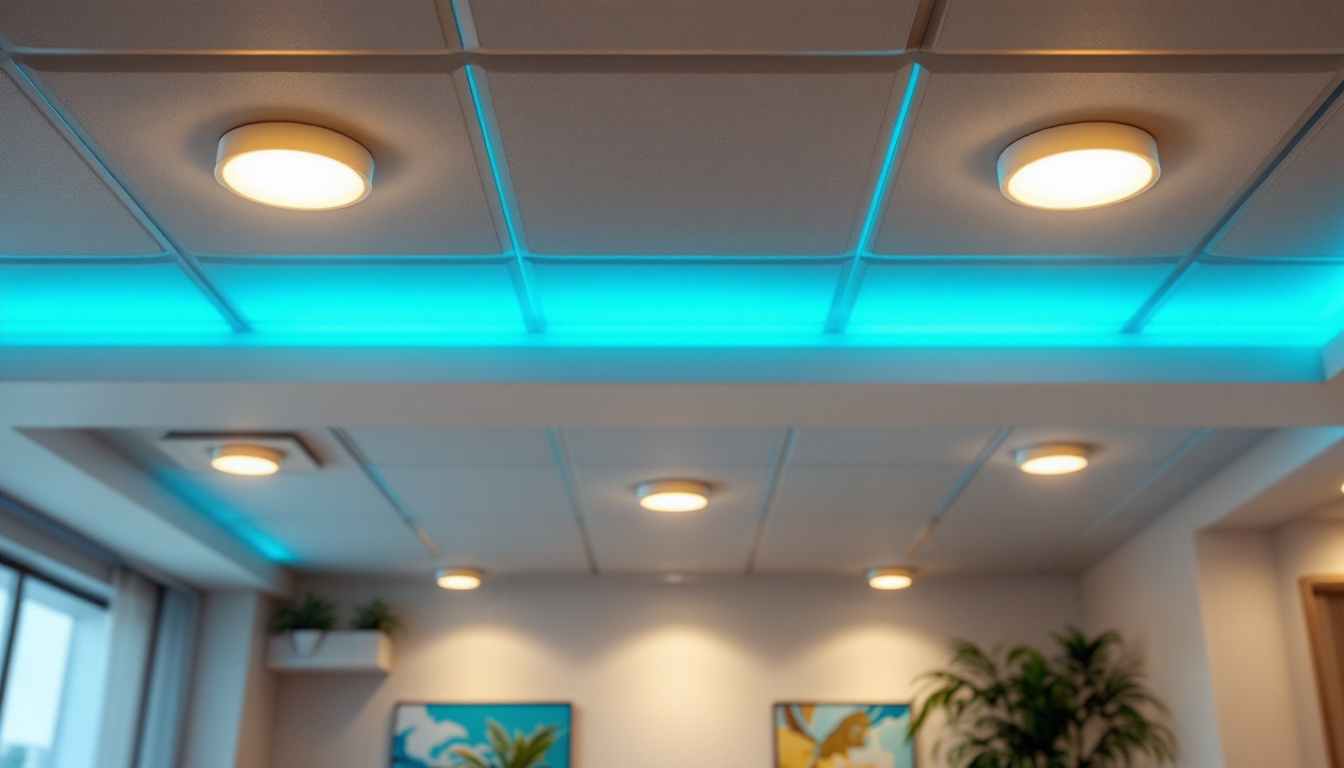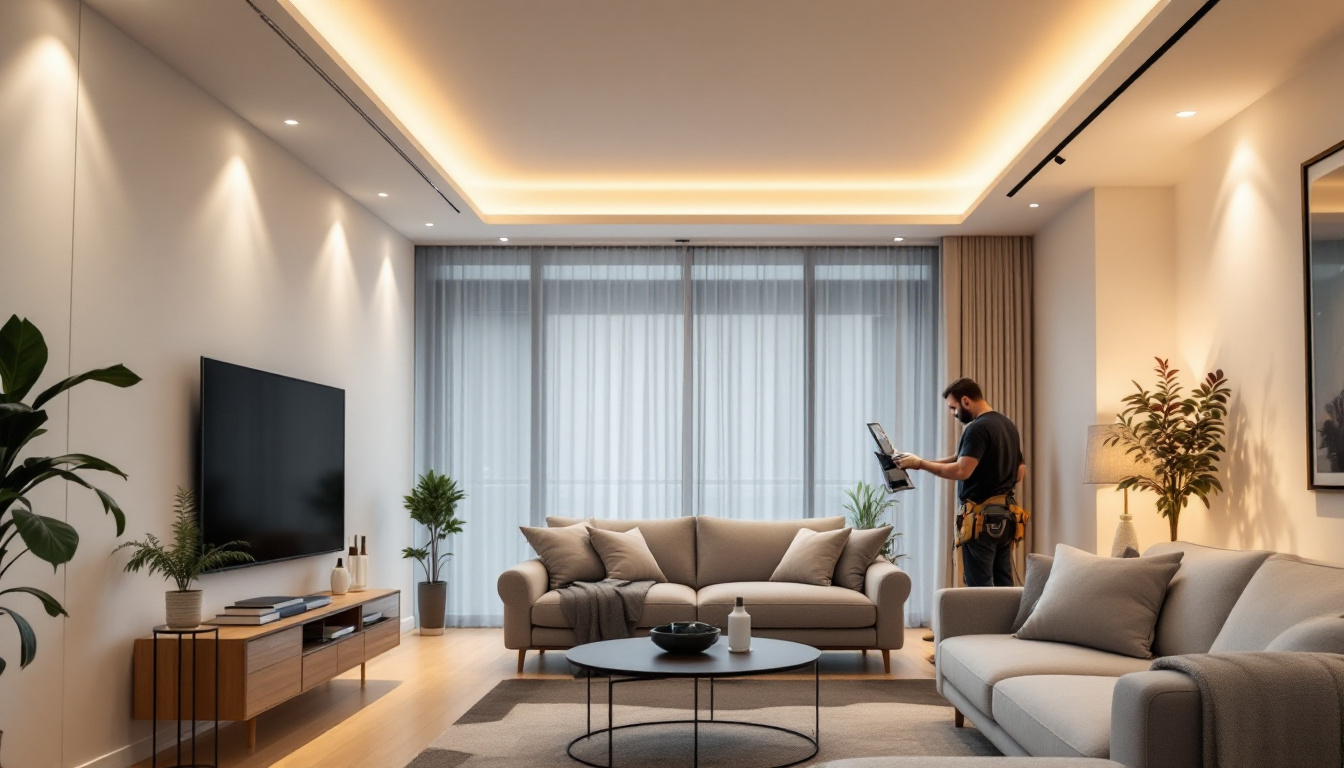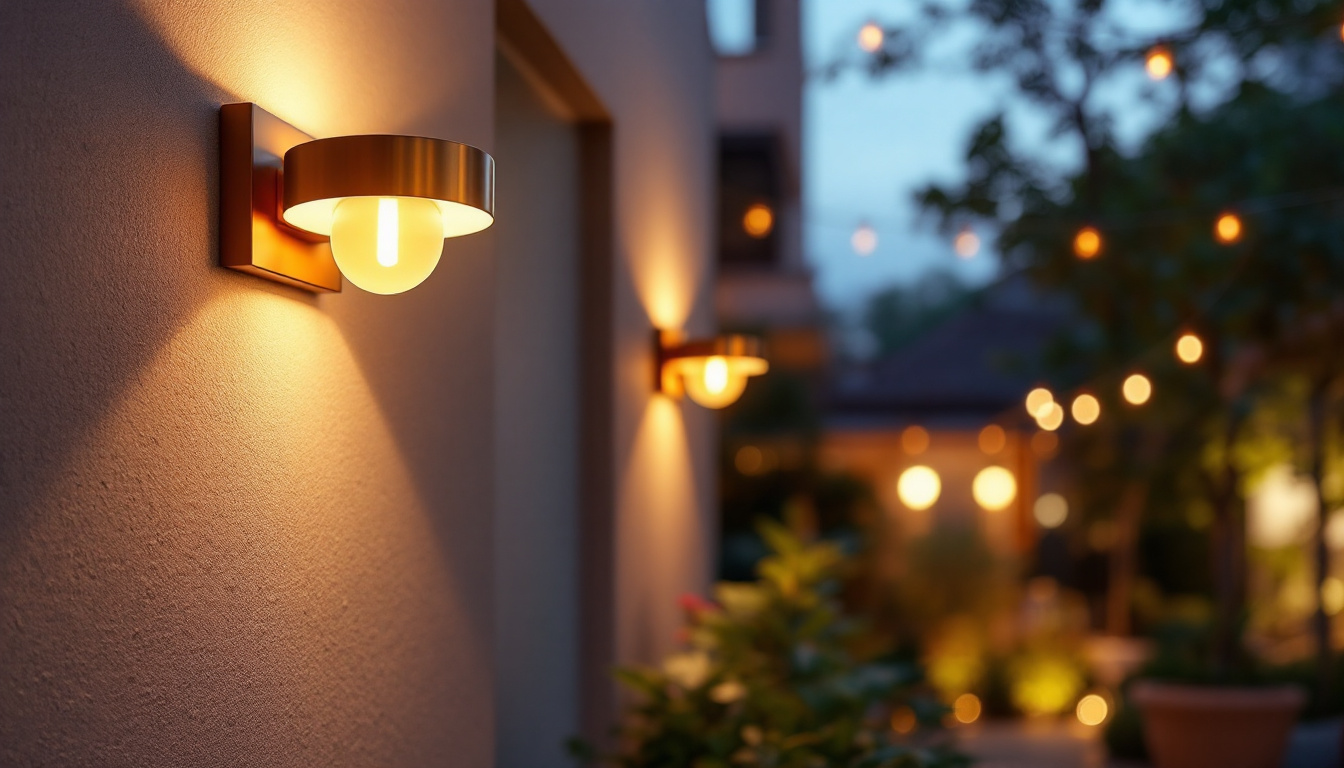
can lights, also known as recessed lights, are a popular choice among lighting contractors for both residential and commercial spaces. These fixtures are installed into the ceiling, allowing for a clean and modern look while providing efficient illumination. Their versatility makes them suitable for various applications, from accent lighting to general illumination.
One of the primary advantages of can lights is their ability to blend seamlessly into the ceiling, which can enhance the aesthetic appeal of a room. They can be used in various settings, including living rooms, kitchens, offices, and retail spaces. This article will explore the resources available to lighting contractors to master the installation and application of can lights in ceiling tiles.
Can lights offer numerous benefits that make them a preferred choice for many lighting contractors. Their unobtrusive design allows for more flexibility in interior design, enabling homeowners and business owners to focus on other decorative elements without the distraction of bulky fixtures.
Additionally, can lights can be equipped with various types of bulbs, including LED, incandescent, and fluorescent options. This adaptability allows contractors to choose the most energy-efficient and cost-effective lighting solutions for their clients. The ability to dim these lights also adds to their appeal, providing customizable ambiance for different occasions.
Moreover, the installation of can lights can significantly improve the functionality of a space. For instance, in kitchens, strategically placed recessed lights can illuminate countertops and work areas, making food preparation safer and more efficient. In living rooms, they can highlight artwork or architectural features, creating a more inviting atmosphere. Furthermore, can lights can be installed with adjustable angles, allowing for directional lighting that can be tailored to specific tasks or moods, enhancing the overall experience of the space.
Another important aspect to consider is the energy efficiency of can lights, particularly when using LED bulbs. These bulbs consume significantly less energy than traditional incandescent options, leading to lower electricity bills and a reduced carbon footprint. Many municipalities offer incentives for using energy-efficient lighting, which can be an attractive selling point for contractors. Additionally, the longevity of LED bulbs means less frequent replacements, further reducing maintenance costs for both contractors and clients.
To successfully install can lights in ceiling tiles, contractors need to be equipped with the right tools and equipment. Having the proper tools not only ensures a smooth installation process but also enhances the quality of the finished product. A well-prepared contractor can tackle unexpected challenges that may arise during installation, ultimately leading to a more professional outcome.
Some essential tools include a stud finder, a hole saw, a drywall saw, and a wire stripper. Each of these tools plays a crucial role in the installation process, from locating ceiling joists to cutting precise holes for the fixtures. Additionally, safety equipment such as goggles and gloves should not be overlooked to ensure a safe working environment. Using a laser level can also be beneficial, as it helps in maintaining uniformity across multiple fixtures, ensuring that the lights are aligned perfectly for both aesthetic appeal and functionality.
When selecting can light fixtures, contractors should consider several factors, including the size of the space, the desired brightness, and the purpose of the lighting. For instance, larger rooms may require more extensive lighting setups, while smaller spaces might benefit from fewer, strategically placed fixtures. Understanding the layout of the room and the activities that will take place there can guide contractors in making the best choices for their clients.
Moreover, the type of bulb used in can lights can significantly impact the overall lighting quality. LED bulbs, for example, are known for their longevity and energy efficiency, making them an excellent choice for both residential and commercial applications. Contractors should stay informed about the latest advancements in lighting technology to offer their clients the best options available. Additionally, considering the color temperature of the bulbs can enhance the ambiance of a space; warmer tones can create a cozy atmosphere, while cooler tones are ideal for workspaces that require focus and clarity. By taking these factors into account, contractors can provide tailored lighting solutions that meet the specific needs and preferences of their clients.
Installing can lights in ceiling tiles requires a specific set of techniques to ensure a professional finish. Proper installation not only enhances the aesthetic appeal but also maximizes functionality and safety.
Before beginning the installation, it is crucial to plan the layout carefully. This involves measuring the space and determining the optimal locations for the can lights. A common rule of thumb is to space the fixtures approximately 4 to 6 feet apart for even illumination.
The installation process begins with turning off the power to the area where the lights will be installed. This is a critical safety step that should never be overlooked. Once the power is off, use a stud finder to locate ceiling joists and mark the desired locations for the can lights.
Next, use a hole saw to cut openings in the ceiling tiles where the fixtures will be installed. It is essential to ensure that the holes are the correct size for the chosen can light fixtures. After cutting the holes, run the electrical wiring through the ceiling and connect it to the fixtures according to the manufacturer’s instructions.
Once the wiring is complete, insert the can lights into the openings and secure them in place. Finally, restore power to the area and test the lights to ensure they function correctly. Following these steps will help ensure a successful installation that meets both safety standards and aesthetic expectations.
Even experienced lighting contractors may encounter challenges when installing can lights in ceiling tiles. Understanding these potential issues and having solutions at hand can make the installation process smoother and more efficient.
One common challenge is navigating ceiling joists, which can obstruct the installation of can lights. If a joist is in the way, contractors may need to adjust the layout or use adjustable can lights that can be positioned to avoid obstructions. Alternatively, it may be necessary to cut a hole in the joist, but this should only be done with caution and in accordance with local building codes.
Another solution is to use shallow can lights designed for tight spaces. These fixtures can be installed in areas where traditional can lights may not fit due to joist placement or other structural elements.
Electrical wiring can also pose challenges during installation. Contractors must ensure that the wiring is up to code and that all connections are secure to prevent electrical hazards. If existing wiring is outdated or damaged, it may need to be replaced or upgraded to ensure safety and compliance with current standards.
Using a multimeter to test the wiring before installation can help identify any issues early on, allowing for timely repairs or adjustments.
Lighting design plays a crucial role in the effectiveness of can lights in ceiling tiles. Contractors should consider the overall aesthetic and functionality of the space when planning the lighting layout. This includes selecting the right color temperature, brightness, and beam angle for the fixtures.
Color temperature is an essential factor that can influence the mood of a room. Warmer tones (2700K to 3000K) are often preferred for living spaces, while cooler tones (4000K to 5000K) may be more suitable for task-oriented areas such as kitchens and offices. Understanding the client’s preferences and the intended use of the space will guide the selection of the appropriate color temperature.
Incorporating layers of light is another vital aspect of effective lighting design. Can lights can serve as one layer of light, but combining them with other types of lighting, such as ambient, task, and accent lighting, can create a more dynamic and functional environment.
For example, in a living room, can lights can provide general illumination, while table lamps or floor lamps can add warmth and coziness. In a kitchen, can lights can illuminate work surfaces, while under-cabinet lighting can enhance visibility and add visual interest. By carefully planning the layers of light, contractors can create a well-balanced and inviting atmosphere.
The lighting industry is constantly evolving, with new technologies and design trends emerging regularly. For lighting contractors, staying updated with these trends is essential for providing clients with the best solutions and maintaining a competitive edge.
Attending industry trade shows, workshops, and seminars can be invaluable for networking and learning about the latest advancements in lighting technology. Additionally, subscribing to industry publications and online resources can provide insights into emerging trends and best practices.
Online platforms offer a wealth of information for lighting contractors. Websites dedicated to lighting design, installation techniques, and product reviews can serve as excellent resources for contractors looking to expand their knowledge and skills. Engaging with online forums and communities can also facilitate discussions with peers, allowing contractors to share experiences and solutions.
Moreover, many manufacturers provide training programs and certification courses that can enhance a contractor’s expertise and credibility in the field. Taking advantage of these opportunities can lead to improved service offerings and increased client satisfaction.
Mastering the installation of can lights in ceiling tiles requires a combination of technical skills, design knowledge, and a commitment to staying informed about industry trends. By utilizing the resources available, lighting contractors can enhance their expertise and provide exceptional service to their clients.
From understanding the benefits of can lights to mastering installation techniques and staying updated with the latest trends, contractors have numerous avenues to improve their craft. By embracing these resources, they can ensure that their installations not only meet but exceed client expectations, ultimately leading to a successful and rewarding career in the lighting industry.
Ready to elevate your lighting installations with the finest selection of can lights and accessories? Look no further than LumenWholesale, where we provide contractors with exceptional, spec-grade lighting products at unbeatable wholesale prices. Our commitment to quality and affordability ensures that you have access to the best lighting solutions for any project, big or small. Say goodbye to inflated markups and hello to hassle-free bulk buying with free shipping. Don’t compromise on quality or cost—choose LumenWholesale for Wholesale Lighting at the Best Value and light up your clients’ spaces with confidence and ease.

Discover the essentials of ballasts for fluorescent lights in this comprehensive guide tailored for lighting contractors.

Discover why lighting contractors should prioritize LED work lamps in their projects.

Discover what distinguishes the top lighting contractors in the industry as we delve into the world of LED recessed lights.

Discover the key factors that distinguish top lighting contractors in the realm of LED outdoor lighting.